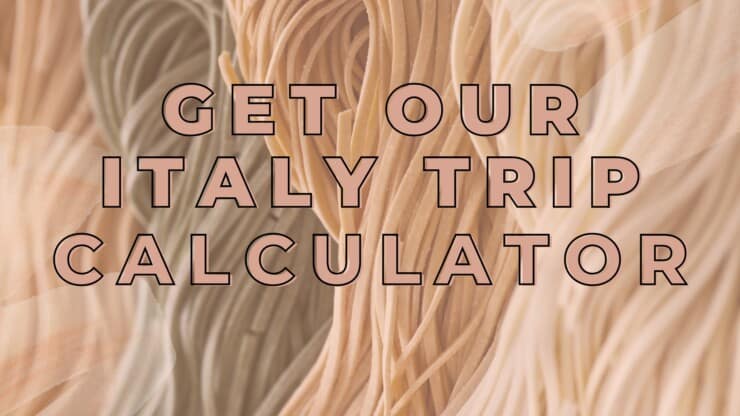Designer stores, shopping malls, fish markets, leather stalls, artisan workshops, vintage shops, fruit and vegetable stands, supermarkets, and street vendors: shopping in Italy is as legendary as a plate of pasta alla bolognese.
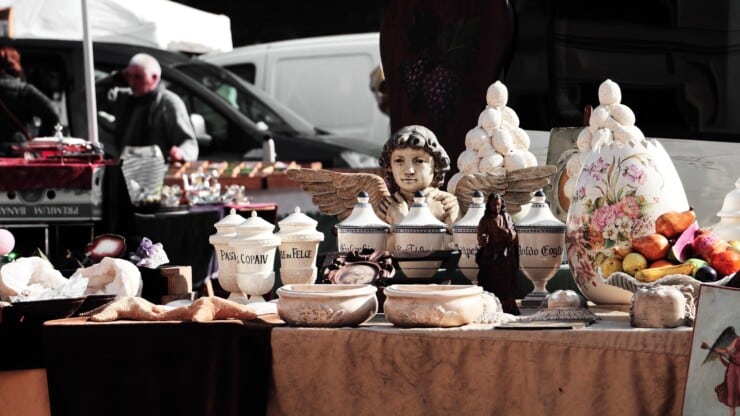
Key Takeaways
- There is all kinds of shopping in Italy from single-focused food shops and permanent food halls to vintage shopping, shopping malls, and outlet stores.
- There is protocol at markets: you often don't touch product but point to it, have to weigh things yourself, and negotiating is only acceptable at outdoor non-food markets.
- Our travel clients love shopping in Italy since major cities have famous shopping streets and there are a lot of high-quality handmade artisan goods .
However, each shopping experience has its nuances, and there are a few things to consider before embarking on your shopping adventure. Across the country, you’ll encounter key streets home to the most famous brands like Salvatore Ferragamo or Gucci; you can shop at a street market with fresh produce; or go beyond the main shopping area to explore a local market or artisan shops.
Having lived in Italy for over 10 years, I have shopped for everything from handmade jewelry to children’s clothing. Now, as an expert in Italy travel planning, I help many travelers with shopping in Italy tips.
Some clients want to shop for high-end brands near the Spanish Steps, some want to know the best places to buy souvenirs, and others are searching for something super specific (vintage Italian movie posters, for example).
Here, I’m sharing my first-hand experience and tips travelers have asked about over the years. Read on for 19 must-know tips for shopping in Italy to make the most of every euro you spend (and avoid standing out as a tourist).
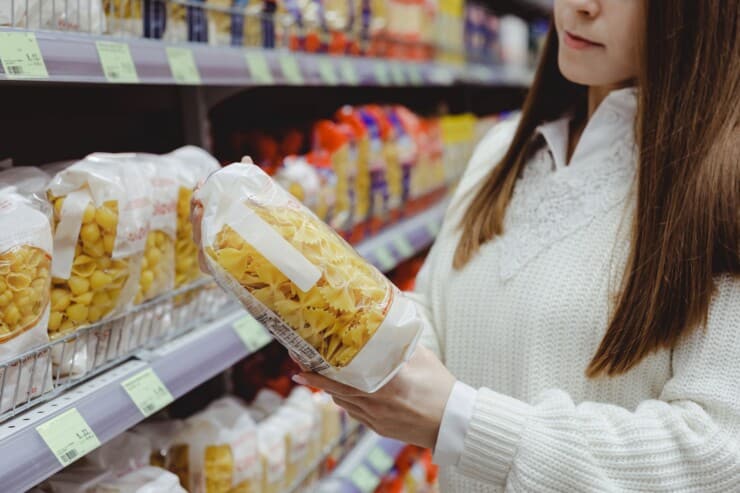
More Than 19 Tips For Shopping In Italy
Here, we will break down what you need to know to shop like a local and where to go, no matter where you shop.
Food Market Shopping In Italy
Few things are more idyllic than an Italian fruit and vegetable stand or fruttivendolo (froo-tee-ven-doh-low). It often looks like something out of a movie, with prices handwritten on small squares of cardboard and little elderly ladies lined up with their trolley carts in tow. Despite that, it can also be intimidating, especially if you don’t speak Italian.
To be successful and confident when shopping at a produce stand, remember that only the vendor touches the produce. Your job is to indicate what you want and the amount. This also takes away some of the nerves while shopping, as you can point and indicate an amount; there is no need to worry about handling or bagging the goods.
Measures: Kilos vs. Pounds
Now that you’ve identified what you want, it’s time to explain how much. This is easy for things like oranges or arance (ah-rahn-chay) or apples or mele (meh-leh) (hold up a number using your fingers), but what about stuff like spinach, onions, or beef?
In Italy, food is measured in kilos, confusing those used to dealing in pounds. To avoid buying 10 lbs of herbs or only getting enough ground meat for one meatball, remember that one pound is about 2.2 kilos.
To make it easier, round it to 1:2, as one pound is approximately two kilograms. Therefore, if you want one pound, ask for half a kilo or half a pound to ask for a quarter kilo. Memorizing this basic conversion will take much of the stress out of market shopping.
Useful Italian Phrases For Shopping
Here is some Italian vocabulary that will help you at the market:
- Vorrei (vor-EY) I would like
- Un chilo (oon, kee-low) – One kilo
- Un mezzochilo (met-zo, kee-low) – Half a kilo
- Un quartochilo (kew-ar-to, kee-low): ¼ kilo
- Un etto (oon, eht-toe): 100 grams
Pro Tip: Prepare for your next trip to Italy by reviewing these 105 basic Italian expressions for travel!
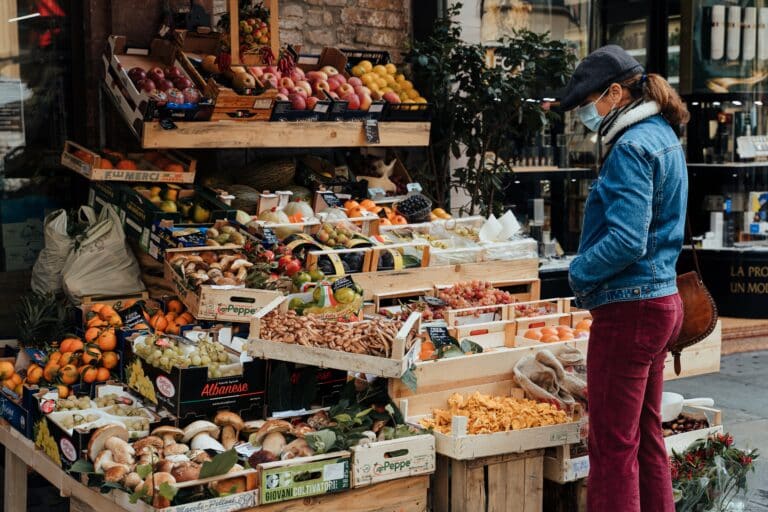
Supermarket Shopping In Italy
Supermarkets or supermercati (soup-air-mer-cah-tee) simultaneously give a taste of the local culture and allow you to stock your Italian pantry since they usually offer local specialties and regional goods.
Bag Your Own Produce
But nothing screams tourist like making this classic mistake: as opposed to a fruit and vegetable stand you bag your produce at a supermarket. But, be warned, it is expected that besides bagging your produce, you can’t simply just pick what you want and go.
Weigh And Tag The Produce
Next to the produce, you’ll likely see a stand with gloves and bags. The first step is to head there and put on a glove before touching anything.
Once you’ve grabbed your fruit with your gloved hand, you will put it in a bag and head over to the scale. In Italy, you weigh and tag your produce. It’s a simple process: You simply press the number corresponding to the produce, and a sticker will print out. Stick this on your fruit bag and close it.
Have Produce Bagged, Weighed, And Tagged Before You Pay
When you get to the register, they will weigh it again to ensure the calculation is correct and then scan it so you can pay. Failure to do this will mean they will not allow you to buy the item because they cannot scan the fruit if it’s not first bagged and tagged in the produce area.
The rest of the supermarket functions just like American supermarkets. They will usually have a meat counter, bakery, spirits, wine, beer, and more.
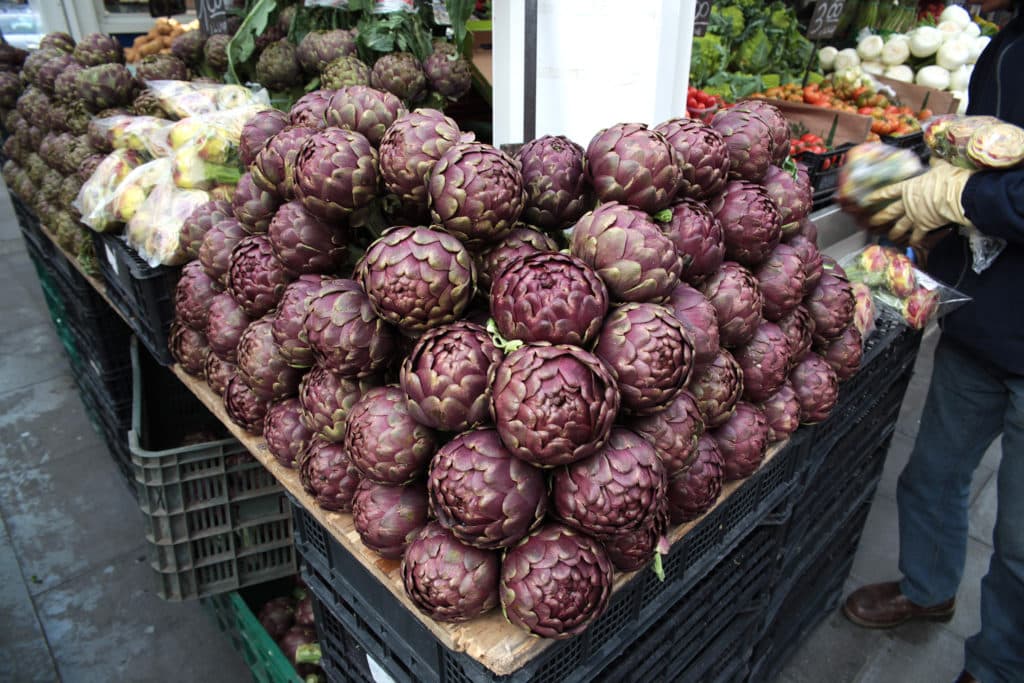
Permanent Market Shopping In Italy
An outdoor market known as a mercato all’aperto (mer-cah-toe, all-ah-pair-toe), is a great place to buy artisanal products of every variety. You can hunt down classic finds like jewelry (gioielli, joy-ee-ell-ee) in Naples, glass (vetro, veh-trow) in Venice, vintage and antique markets in Milan, leather (vera pelle, veh-rah, pel-lay) in Florence, and marble (marmo, mahr-mo) in Rome.
Sometimes, these markets aren’t artisanal at all but just weekly markets that the locals count on for their necessities. From the regular flea market in Forte dei Marmi to the weekly market in Florence’s Cascine park or the Monday market in Milan’s Brera district across Italy, you’ll find weekly markets. If you’re in search of these, reach out and we’ll help you sort it out.
Negotiating Price At An Italian Market
Outdoor markets are perhaps less intimidating than indoor markets, with one big caveat: Should you negotiate prices? Outdoor non-food markets would be the only acceptable place to haggle a price. At an outdoor market, you probably have a 50% chance of lowering the prices, depending on the specific vendor.
For example, in Florence, at the outdoor market, Mercato di San Lorenzo, vendors negotiate for any item. However, it might not be the haggling you’d expect. For example, you might find instead of a price reduction, they offer a deal if you buy more than one.
Understanding Prezzo Fisso
Additionally, in some markets, vendors have recently decided not to allow haggling at all, and they usually post a sign that says “fixed price” (prezzo fisso) with their goods. If you don’t see that sign, you can try to knock a few euros off the total. However, beware that negotiations aren’t usually dramatic price cuts. At best, you’ll save a few euros; at worst, you’ll leave empty-handed.
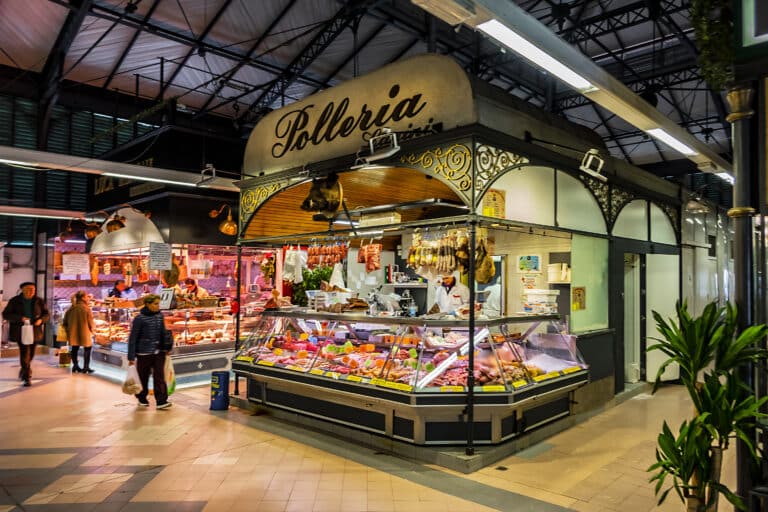
Market Shopping In Major Cities
If you are excited to shop on your trip to Italy, you’re not alone. Markets are some of the busiest spots; each city has its can’t-miss places. Almost every corner of Italy has a market to explore, from the covered market of Livorno to the fish market of Catania. These markets will not be missed if you’re heading to any of these places.
Florence Markets
Florence has three main markets: Mercato Centrale, San Lorenzo, and Sant’Ambrogio.
Mercato Centrale
This market is made up of an indoor market on two levels. The indoor market has two levels, the bottom level is produce, meat, bread and other comestible goods, while upstairs instead is a place to eat and socialize. This market is heavily touristed, and for good reason. It’s still one of the major shopping spots for Florentines and a great place to pick up souvenirs and treats. If you’re looking for a fast but delicious lunch, head up to the second floor, and you’ll have an almost endless amount of local food vendors.
To be clear, this market was renovated in 2014 to preserve the ground floor food and meat market and to fill the until-then abandoned second floor with artisan food spots. The team behind this has since launched similar projects in Rome (at the Central Station) and Milan (also at the main train station), and they all now go by “mercato centrale.”
Mercato di San Lorenzo
Outside the Mercato Centrale is the San Lorenzo market. It comprises street vendors selling leather goods, homewares, clothing, and more. Unfortunately, in recent years, the number of “made in Italy” products in this market has decreased and been replaced by foreign goods.
Finding quality Italian artisans and items for sale is much harder than it once was. Your money is often better spent inside a shop, but browsing around and looking at everything they offer can be fun.
Mercato di Sant’Ambrogio
The most historic market in Florence, Sant’Ambrogio Market, is named for its location in the Sant’ambrogio neighborhood on the opposite side of the city from the Mercato Centrale. It’s a single-story market that has some lunch places worth checking out, but mostly, it’s a place to buy meat, produce, cheese, and other food items.
After 12 years in Italy, this market is one of my favorites because it’s a local gem, with most of the shoppers being Florentines doing their daily market trips. Occasionally, around the outside of the market, there will be a pop-up market for buying non-food items. This is a fun place to shop if you need clothes or other items for your accommodation in Italy. Additionally, I never miss a stop inside to pick up my favorite truffle cheese and sometimes an Italian pasta dish on the go.
Milan
The city of Milan is known as one of the best shopping destinations around the world and for good reason. In addition to the high-end fashion area known as the “Quadrilatero della Moda” or the Via Monte Napoleone shopping district, it also offers incredible vintage shopping, antiques, concept shops (see 10 Corso Como or Spazio Rossana Orlandi), and gourmet groceries.
Mercatone dell’Antiquariato
The most prized of the open-air markets in Milan is the Mercatone dell’Antiquariato. As the name suggests, this is an antique market and takes place on the last Sunday of the month right in the city center. The scenic market hugs the city’s main canal known as Naviglio Grande, and you can find everything from used books to vintage jewelry in the almost 400 stands.
Naples
Head to one of its many shopping streets or markets to see this famed city at its loudest and most chaotic. Some of the gaudiest souvenir shopping can be done on Via San Gregorio Armeno, a narrow street renowned across Italy for its pastori or nativity scenes (be sure to stop by the famous Ferrigno workshop). While many head to Mercato di Porta Nolana for anything and everything from fresh mozzarella to cheap luggage, we suggest you spend time instead at Mercato Pignasecca, which is Naples’ oldest market.
Palermo
The capital of Sicily has chic shopping in its modern quarter and many workshops to explore in its old town, but it’s most famous for its food markets. There are three main standing markets in Palermo —Mercato Ballarò, Mercato Vucciria, and Mercato del Capo — and they are legendary for their rich offerings and because they reflect the region’s many historical influences.
While Mercato Ballarò and Mercato Vucciria are worth a visit, the equally impressive Mercato del Capo is the easiest to navigate for visitors. From Sicilian street food to some of the most prime local produce (oranges! sundried tomatoes! pistachios!), going to one of these markets is a crash course in Sicilian food.
Venice
Mercato di Rialto
This market in Venice is probably the most well-known and most frequented market in the city. It’s located northwest of the Rialto bridge in the San Polo neighborhood, a short walk from the train station, San Marco, and many of Venice’s most visited areas.
It’s the perfect place to see and sample delicacies from Venetian cuisine and watch locals doing their daily shopping. It boasts both a legendary fresh market and a seafood market next door, so there is truly something for everyone here. With Venice’s ideal location along the Adriatic Sea, the seafood specialties should not be missed.
Rome
Compared to Venice and Florence, Rome is a massive city with many markets. Almost every quarter has its own weekly or daily market, such as the Testaccio and Esquilino markets. Wandering Rome, you’re sure to run into a market or two because of the city’s size. However, if you want to check out a few popular options, don’t miss the Campo de’ Fiori market, one of the oldest in the city, and Mercato di Campagna Amica.
Mercato Campo de’ Fiori
This market is located exactly from where it takes its name, Campo de’ Fiori, in the historic old center of Rome. In recent years, this part of Rome has given way to tourism, and nowadays, it’s harder to find locals here than it once was.
However, the beauty of this market is that it has been there for so long that it’s become a genuine part of Rome. If you arrive early in the morning, you’ll see that it still serves as the primary market for the remaining locals in the area. It’s a place to find groceries of every kind and still hear an authentic Roman accent or two while shopping.
Mercato di Campagna Amica
If you want edible goodies and food souvenirs, try exploring the more modern Mercato di Campagna Amica. Located near Circus Maximus, this hyperlocal only sells products made and grown in Lazio (the region where Rome is located). It’s a great place to find local honey, prosciutto, other foodstuffs, and many sauces and other delicacies already prepared for transport.
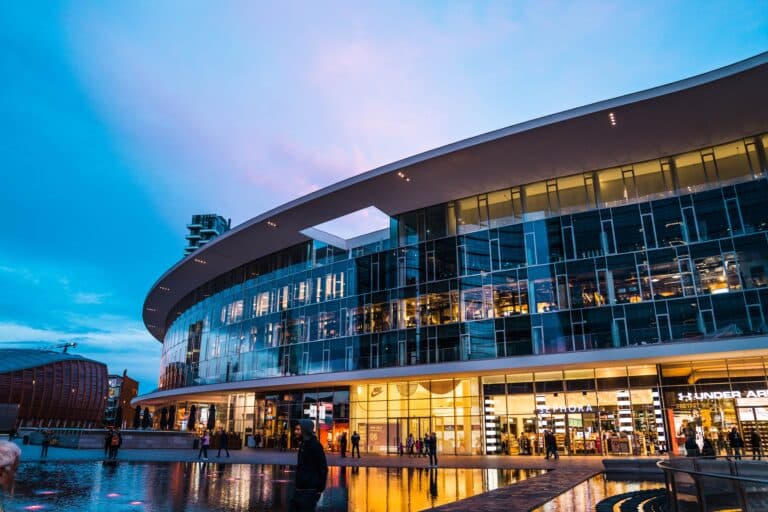
Other Shopping In Italy
Besides food, there are other types of shopping worth exploring in Italy.
Vintage and Antique Shopping
In particular, for the vintage lover, you can find phenomenal boutiques with high-quality vintage clothing and accessories in almost all major Italian cities (search “vintage” in Google Maps).
Shopping Malls
If you prefer strolling indoors, you can also find regular shopping malls with mainstream stores like Zara (look for a centro commerciale (chen-trow, coh-mer-chal-ay) on the map). Most are modern, like Milan’s Gae Aulenti plaza (pictured here).
Department Stores
At the heart of many downtowns, you can visit Italian department stores such as COIN and Rinascente to find everything from makeup to clothes to homewares.
High Fashion Shopping Streets
Instead, if you’re more of a high-end luxury brand lover, you can also hit up the designer boutiques along famous shopping streets in places like Rome (Via Condotti and Via del Corso), Milan (Via Monte Napoleone), Turin (Via Roma), and Florence (Via de’ Tornabuoni).
Other Renowned Shopping Streets
Across the country, legendary shopping streets are well worth your time. In Rome, don’t miss out on Via dei Coronari (close to Piazza Navona) for jewelry and antiques or Via dei Condotti (near the Spanish Steps) for high-end fashion brands. In Florence, another famous shopping street to stroll is Via dei Calzaiuoli, while, in Milan, you’ll want to window shop throughout the Brera and Cinque Vie districts.
Outlet Stores
Discounted designer lovers should head to the outlet malls for discounts. The Tuscany designer outlet mall outside of Florence, called The Mall, has high-end Italian brands like Giorgio Armani, Gucci, Versace, Valentino, and more.
Italy Christmas Markets
From late November until early January, festive markets are held across the country as one of the main Italian Christmas traditions. We’ve shared our favorite Italian Christmas markets and what to buy at each, from Bolzano and Verona to Perugia and Rome!
Bi-Annual Sales
And lastly, if you’re genuinely a fashion die-hard, your best shopping in Italy will be during the twice-yearly sales seasons. The first is in January, and the second is in July. Each sales cycle lasts about 6 weeks, and it is the perfect time to go on a shopping spree and benefit from prices that just can’t be found the rest of the year.
No matter your preference, from fettuccini to Fendi, shopping in Italy will always have something to please everyone. So, If you’re looking for a specific type of shopping in Italy, don’t hesitate to get in touch.
When providing our travel planning services, we’ve shared our recommendations, be it to buy truffles in Alba, chocolate in Turin, ceramics in Sicily, limoncello on the Amalfi Coast, vintage shopping in Milan, or our pick of artisans everywhere from Bergamo to Rome.
Frequently Asked Questions About Shopping In Italy
Italy is renowned for its high-quality goods, particularly fashion items, leather goods, food products, and glassware.
Italy is famous for its leather goods, ceramics (especially in Sicily and the South), tabletop design, food items (including olive oil, wine, and pasta), fashion items, and glassware.
Some tips include understanding store hours (including break times), learning some basic Italian phrases, respecting shopping etiquette (like not touching produce), looking for quality, and being aware of VAT nad how to get a refund.
Get A Personalized Travel Itinerary
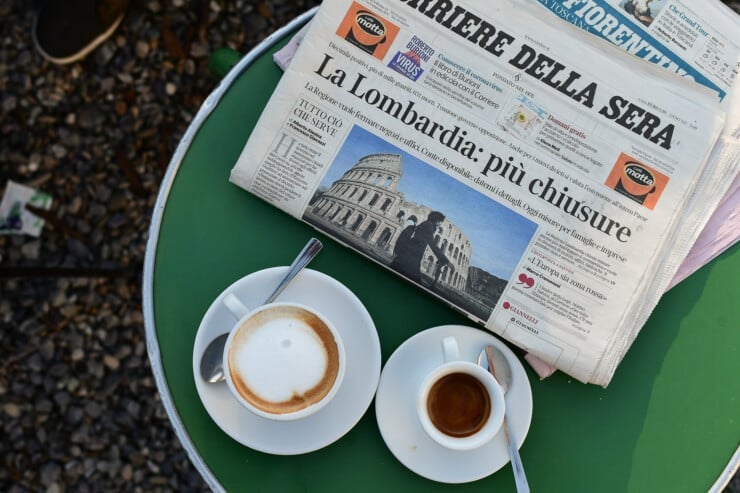
Tips For Drinking Coffee In Italy
You may want to order an espresso to keep you fueled up for shopping in Italy. So we’re sharing tips for coffee in Italy, from how to order it to the classic Italian coffee drinks and historic Italian cafes to visit on your next trip.
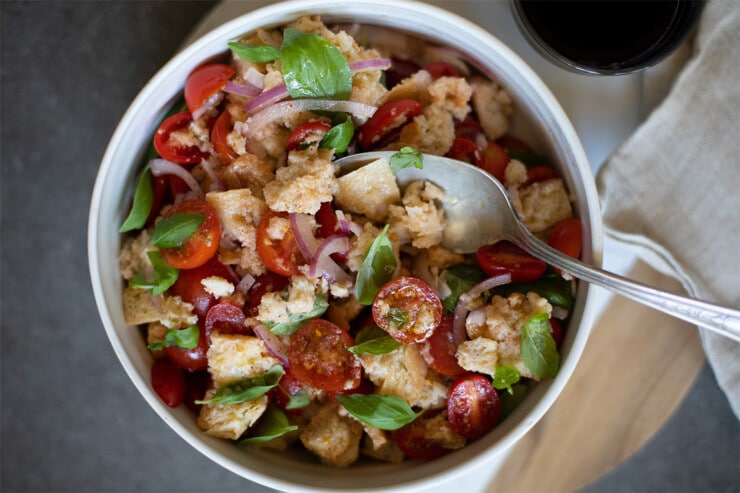
Classic Italian Recipes
Cook up these classic Italian recipes to get a taste of the country in the comfort of your home:
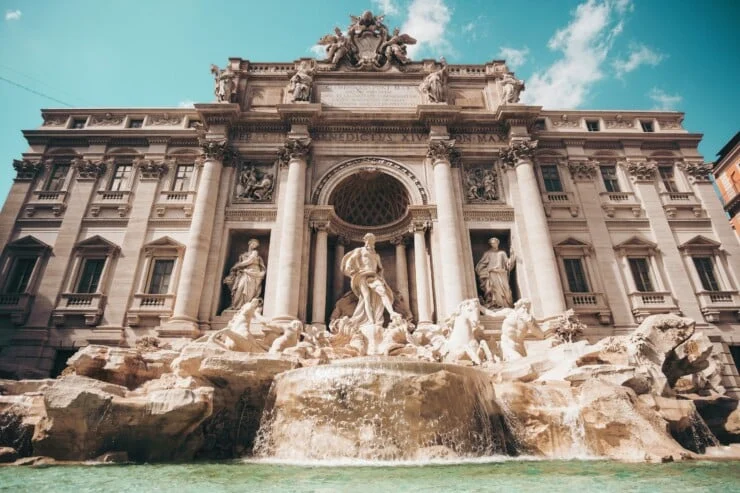
Italy Travel Guide
Looking to travel to the Bel Paese soon? Check out our Italy Travel Guide for more cultural tips, itinerary ideas, and advice on what to eat and where to stay.
Have Us Plan Your Italy Trip
Did you know we’re also a boutique travel agency specializing in Italy travel planning? If you’re looking to plan one of the best trips to Italy, our Italy trip planner services are here to help you plan your perfect itinerary.
Photo Credit: Opening photo by Simone Pellegrini on Unsplash; fruit stand photo by Gabriella Clare Marino on Unsplash ; Florence covered market photo by Kiev.Victor; Mall in milan photo by Zac Wolff on Unsplash
